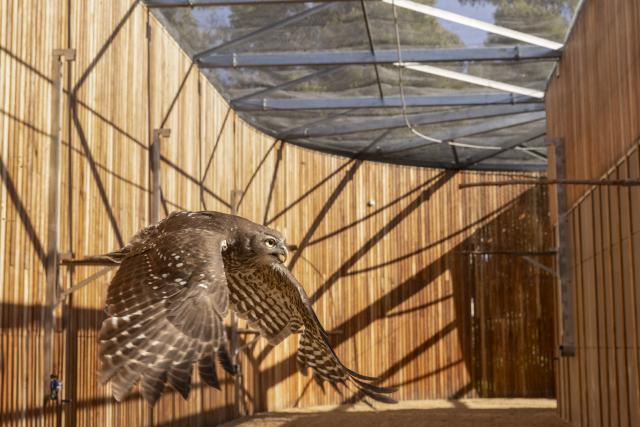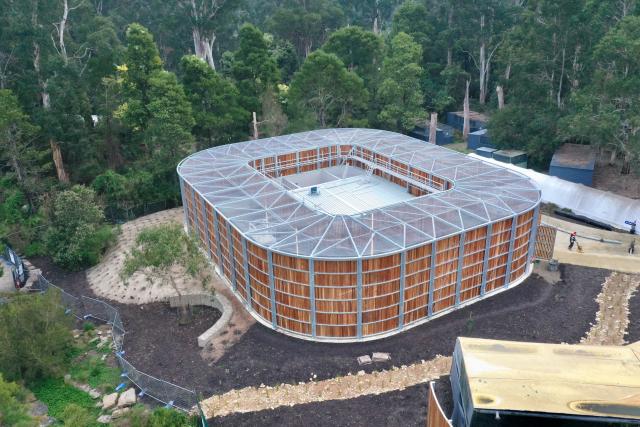A barking owl, nankeen kestrel and wedge-tailed eagle with an impressive two-metre wingspan have taken the first test flights within Healesville Sanctuary’s Raptor Rehabilitation Centre, soaring through the new structure.
The large donut-shaped building forms a continuous 100-metre loop so injured birds can build up their flight fitness before being returned to the wild.
Flight fitness is one of the most important milestones of recovery for a bird receiving medical care, as they need to be able to hunt for food and avoid predators to be able to thrive on their own again.
Healesville Sanctuary veterinarian Dr Phillipa Mason said the Sanctuary’s Spirits of the Sky team worked with resident Healesville Sanctuary birds for the first test flights, prior to injured birds using it during their return to fitness.
“It was an amazing experience to see how the birds used the space after the years we’ve spent planning this purpose-built centre,” Dr Mason said.
“We were able to look at the symmetry in the wing flaps, see how the birds fly around a corner, check if they use their wings correctly and observe if they use their tail to slow down and stop safely.
“This new centre is an amazing addition to the wildlife hospital and our capacity to care for wild birds. We’ve been rehabilitating birds for decades, but we’ve never been able to do it like we can now, which is exciting.”
The unique shape means birds can fly around and stop when they are ready. Birds can potentially fly for 100 metres, 200 metres or 50 metres depending on their level of recovery.
A curtain can be pulled across the flight path to direct birds back to the recovery wards. The veterinary team can make observations via cameras in the flight tunnel.
The centre also contains smaller intensive care units within the middle of the grand building.
During the past financial year, 63 raptors received treatment at Healesville Sanctuary’s Australian Wildlife Health Centre.
Road trauma-related injuries are the most common reason for wild birds needing veterinary care.
Visitors to Healesville Sanctuary can see the incredible work that takes place at the wildlife hospital via glass internal walls in the operating theatres.
The dedicated team treats approximately 2,000 patients each year and cares for the animals that call the Sanctuary home.
Construction is currently underway to create a visitor tunnel alongside the Raptor Rehabilitation Centre allowing visitors to learn more about the inspiring rehabilitation journey.
The Victorian State government has invested more than $3.2 million in the world-class, purpose-built Raptor Rehabilitation Centre at Healesville Sanctuary, with $1.5 million provided through the Regional Tourism Investment Fund and $1.42 million from the Parks and Reserves Trust Account.
Generous anonymous donors who believe in creating a future rich in wildlife have also supported the Zoos Victoria project.









